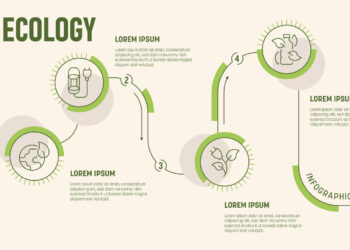
There is much talk in publishing circles about disruption. What we are actually seeing unfold in our industry is not disruption, but innovation and evolution — or rather, adaption to the new normal. It is hard to find a publisher, library, institution, or funder that is not experimenting with new tools, be they for authors, readers, researchers, or students.
Over the last year, Kent Anderson and David Crotty have touched on the notion that innovation in the publishing industry is often the domain of small start-ups. By their very nature, as venture capital driven entities, these are created to be sold to a commercial organization, hopefully for large sums of money. Just look at the fate of Mendeley, which was created “for the people, by the people”, but sold to Elsevier for a sum of money that could keep me happily supplied with Maltesers for the rest of my life. Of course, this kind of blanket assertion contains many holes, and the significant, outraged response to Kent’s piece in 2012, and David Crotty’s follow-up article on “Driving Innovation” provided a few examples of organizations that have indeed given back to the community – PLOS being the prime example.
The fact remains, though, that it is rare to see academic societies taking the lead in innovation. Many, though certainly not all, societies have significant endowments, and there is comfort in maintaining these endowments to provide for a rainy day. There is a certain satisfaction in just having money in the bank. This conservative view of life is also driven by worry, of course. Just look at the recent years of recession, which no doubt encouraged societies to hunker down. Could a shaky economy rock the foundations of an academic society? Well, yes it could.
But the way to tackle stability and even growth for the future health of an academic society is to diversify its offerings to the community. The needs of members are shifting. A society should adapt to these changing needs. A society exists to serve the needs of its members and all those in a field of study. Many societies rely on their publishing output to generate income, with conferences often running close behind. Are there examples of societies that are saying to themselves “let’s invest in publishing innovation to help us fulfill our mission more effectively?” Are there societies, or other non-profit organizations that will incubate good ideas and translate these into open source tools for the community to embrace?
There are some. I will talk about a few here, but I encourage readers to contribute to this thread with similar ventures in the comments below.
Let’s talk about mathematics and MathJax, an example of society driven innovation that I am intimately familiar with as a member of the steering group of this project. The most important thing about MathJax is that it was created and has evolved as a truly collaborative effort among competing publishers.
What is MathJax, and how did it come to be? There was a problem that needed to be solved. Mathematicians have their own language. To write and publish mathematical equations a mathematician must know LaTeX, a document markup language accepted more or less universally by mathematicians for preparing mathematical works. The issue is how to render math online, and this is where MathJax, an open source JavaScript display engine for mathematics, has meaning.
What about browser support? The World Wide Web Consortium (W3C) has overseen the development of the MathML standard from the earliest days of the web. This became officially part of HTML5 and EPUB 3 in late 2011. But, for reasons that perhaps require another post, browser and reader support for MathML remains extremely limited to this day — only Firefox offers good native support. Internet Explorer users are forced to rely on a third-party plugin, MathPlayer. Google Chrome no longer supports MathML.
Peter Krautzberger, MathJax Product Manager states,
Simply put, MathJax solves the problem for math on the web with an unobtrusive but powerful JavaScript library — the next best thing after browser support. MathJax converts mathematical input such as LaTeX and MathML into beautiful and accessible output using the ‘right’ web standards – HTML, Cascading Style Sheets (CSS), and webfonts, not static images.
This is an open source project founded by the American Mathematical Society (AMS), Design Science Inc., and the Society for Industrial and Applied Mathematics (SIAM) with supporting partners of AIP, The Stack Exchange, IEEE, Cengage Learning, and Elsevier, and other contributors (http://www.mathjax.org/sponsors/). As an open source project, its fruits are open to the whole community, and have enabled new forms of online communities such as MathOverflow.
Another example of open collaboration may be seen in the STIX Font project. The mission of this project is to prepare a comprehensive set of fonts that will be usable by the scientific and engineering community in processes ranging from manuscript creation through to final publication both in print and online. All of this will be made available to all. Partners on this project include AMS, AIP, ACS, IEEE, APS and Elsevier.
An example of a project that involves wide range of publisher and technology organizations is the Readium Foundation, dedicated to accelerating publisher driven, open source technology development for EPUB 3 and the Open Web Platform. Readium was initiated by the International Digital Publishing Forum (IDPF) and is making significant progress towards developing a reference system for rendering EPUB 3 publications.
These are but a few examples, that I can come up with, of society driven collaborative innovation that will benefit academic communities, publishers, libraries, and institutions.
What else is out there? We would love to hear from you.
Discussion
3 Thoughts on "The New Normal: Society Driven Innovation"
Robert a very article on society innovation spurned by a specific need by the community. Mathematics in many ways enjoys a unique position in science in that most everyone uses it. I think some problems arise in other disciplines which are not used or needed by many.
The above leads me to ask what can a society that serves a specific niche do to innovate. A society that cannot attract the funding of others or make their area of study applicable to a large audience.
Thanks Robert, I’ve always thought that there are some great opportunities around open taxonomies that would be interesting for societies within a discipline to collaborate on (in fact, I think this is already happening in some fields?)
Robert, Thank you. As you suggest, scholarly publishers (commercial and society) innovate best around industry standards. CrossRef and ORCID are additional examples.
Commercial publishers have also excelled at “process innovation” – off-shore composition is a good example.
However, Scholarly publishers struggle with pure “technology innovation”. The problem is structural. Any technology innovation they individually undertake is inherently limited to monetization with their own content, and therefore cannot achieve sufficient ROI to justify necessary ongoing levels of investment, even when initially successful.
The core competency of scholarly publishers should be “editorial innovation”. But they sometimes miss these opportunities too. For example, UpToDate was started by Burton Rose and his wife in their garage and sold to Wolters Kluwer for a rumored $400M. PLOSONE was essentially an editorial innovation (“publish first, filter for interest later”).
There continue to be great opportunities for “editorial innovation”.
Richard.



